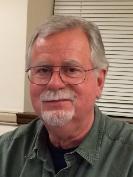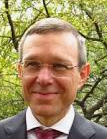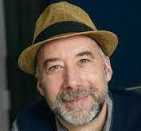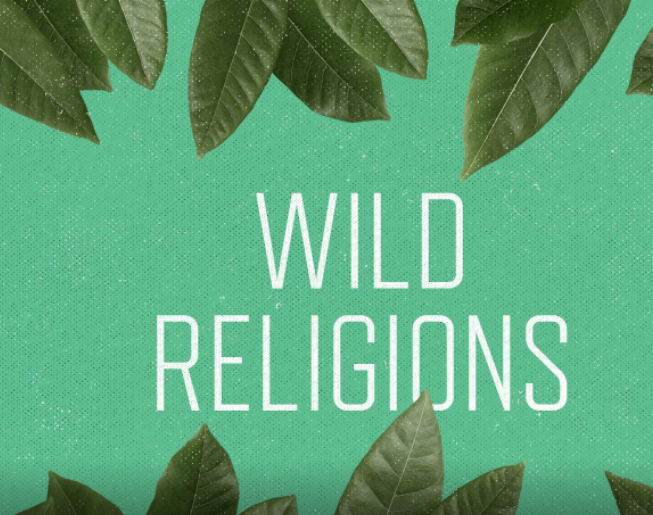Greetings, WesleyNexus Colleagues:
The process of disaffiliation within the United Methodist Church continues apace with numerous stories of churches selecting to leave the denomination. While on the surface, it appears that LGBTQI issues are the primary reason for leaving, deeper questions of theology and practice are also significant and more fundamental. Social media discussions have engaged in what it means to be theologically “orthodox” and how being orthodox defines what it means to be a Christian. Cabe Matthews published a recent article in Firebrand presenting the particular perspective reflecting the traditionalist point of view of the journal. His article is in response to the centrist position laid out by Rev. Adam Hamilton. WesleyNexus encourages understanding this perspective (and Adam Hamilton’s as well) while viewing it as insufficient and incomplete. In this issue, we invite our readers to ask what it means to be orthodox and how it can enrich the life of individuals, the church and the society at large. In addition, are there presuppositions within science that are akin to theological orthodoxy? Can a different view of orthodoxy encourage creativity and imagination in a way that enliven the broader discussion known as science and religion? We think so. As John J. Thatamanil states below, “orthodoxy does not give you a handle on God. At best, orthodoxy tutors and inflames a limber theological imagination that longs for a God who is beyond comprehension”. Avi Loeb likewise promotes doing science that breaks away from the constraints of rigid scientific orthodoxy “humbled by eons of open-minded interpretation of evidence”.
Contents:
IRAS webinar: Universality in a Multi-Ethnic World with Dr. Varadaraja V. Raman
First Annual Kent Weaver Lecture – October 29, 2022 – Dr. William D. Phillips, Nobel Laureate
IRAS video: Evolutionary Consequences of the Nature’s Scripture with JD Stillwater
Lots of orthodoxy talk on Twitter. Here’s another of my responses by John J. Thatamanil
When Scientific Orthodoxy Resembles Religious Dogma by Avi Loeb
What is quantum mechanics trying to tell us? By Adam Frank
Religion Can’t be Tamed by Pascal Boyer (Templeton Religion Trust video)
What the Webb Telescope Images Didn’t Capture by Faith Stults
O Father-Mother Birther of the Cosmos?! By Steve Caruso
Thanks continue to go out to our generous contributors. We encourage you to share comments, articles and insights that will help us all weather these difficult times.
Blessings,
Rick Barr and the rest of the WesleyNexus team
****************************************************************************************************

Universality in a Multi-Ethnic World
with Dr. Varadaraja V. Raman
September 7, 2022, at
4:00 PM Central time,
5:00 PM Eastern time
Hosted by The Institute on Religion in an Age of Science
Presentation Overview:
Presentation Overview:
Some topics to be discussed in this lecture: Global perspectives on many issues have changed and are changing rapidly in the twenty-first century. One of these has both positive and negative components. This is the rise of Ethnocentrism. This talk will trace the origins of Ethnocentrism and its role in history; it will discuss how it has enriched and constrained humanity’s visions. In some ways, what is happening will bring more excellent light to humanity. In some other ways, it is likely to push us back to some aspects of the darker ages of the past. The lecture will reflect on how, in this context, we can foster a spirit of Universality, which has been a running theme throughout history but is adversely affected by the rise of Ethnocentrism in our century.
About the September 7th presenter:
Dr. Varadaraja V. Raman holds his Ph.D. in physics from the University of Paris, has authored numerous books and articles, and is considered an expert in Hindu religion and its relationship to modern science. Professor of Physics for over three decades, Raman obtained his doctorate in theoretical physics at the Sorbonne under the tutelage of Nobel laureate Louis de Broglie, and maintains linguistic facility in French, German, Spanish and classic Sanskrit, reciting Vedic hymns and the Pater Noster in Latin. He returned to India for research at the Saha Institute of Nuclear of Physics and later received a post with UNESCO. He was elected Senior Fellow at the Metanexus Institute, received the Raja Rao award for contributions to the literature of the South Asia Diaspora, serves on the Board of the Hickey Center for InterFaith Studies, and the editorial Boards of Zygon and the Science and Theology Journal. His books include Indic Visions in an Age of Science; Truth and Tension and Science and Religion; Variety in Religion and Science; Ubiquitous God; and Variety of Humansfrequent lay speaker. In 2012, he launched Seven Candles as a part-time mission to share the beauty and mystery of science with adult audiences, work that this year became a full-time endeavor. After 24 years in K-12 classrooms, his target audience now includes everyone.
To register for the September 7 webinar:
https://us02web.zoom.us/webinar/register/WN_9Ah-VtwuRwSnVLmNfrwzBg
************************************************************************************
First Annual Kent Weaver Lecture – October 29, 2022 – Dr. William D. Phillips, Nobel Laureate

Kent Weaver was born to a Methodist couple, baptized as an infant at Metropolitan Memorial Methodist Church in Washington DC, participated in Methodist Youth programs, enrolled and graduated from a Methodist College, and served as a leader in virtually every capacity for some forty years in his Methodist congregations in the BWCUMC. Moreover, he served as Treasurer of the Wesley Nexus organization since its incorporation until his death in May 2020. In his honor, the WesleyNexus board collaborated with the congregation at National United Methodist Church to establish an annual lectureship to perpetuate his commitments. Then the pandemic hit and everything closed down for more than a year. But now, on October 29, 2022, the fist annual lecture in Science and Religion will he hosted at Metropolitan United Methodist Church, 3401 Nebraska Avenue, NW, Washington DC, across the road from The American University. The event, October 29, a Saturday afternoon, begins with a reception at 4:30 pm, the lecture begins at 5:00 followed by a Q & A period, and comes to a close at 6:30 so that persons with Saturday evening commitments can keep them.

The lecture by Dr. William D. Phillips, Nobel Laureate in Physics and a long time director at the National Institute on Standards and Technology, will be open to all and is meant for an inquisitive lay audience. Dress will be summer casual, and pre-registration will be appreciated so that we can properly prepare the food at the reception. The event will not be live streamed. The event will be free with donations voluntary.
Pre-registration is requested and will be available soon by copying the information found here and emailing the filled out form to WesleyNexusNewsletter@gmail.com or printing the online .pdf form and mailing it to the address provided.
***********************************************************************************
Lots of orthodoxy talk on Twitter. Here’s another of my responses by John J. Thatamanil

Lots of orthodoxy talk on Twitter. Here’s another of my responses.
Orthodoxy is not what you think it is. Orthodoxy is not literalism.
Orthodoxy is not creedalism.
Orthodoxy is not the enemy of mystery; generous orthodoxy keeps the mystery open.
Orthodoxy is not the end of theological reflection but only its beginning.
Orthodoxy is not exclusivism; it is the ground for listening and learning.
Orthodoxy does not offer neat and simple answers you can memorize and recite on Sunday morning; it offers starting points for the movement into mystery of the divine life over which Christians have no controlling interest.
Orthodoxy does not give you a handle on God. At best, orthodoxy tutors and inflames a limber theological imagination that longs for a God who is beyond comprehension.
The Facebook post with comments can be found here: https://www.facebook.com/john.j.thatamanil/posts/pfbid0efjtRJCHCyx3igoaS8VEdGAQkQEodSnW3eCemG7j2jWYw9rkADnMrh9TaToir3gdl
Professor at Union Theological Seminary and Priest, Volunteer Curate and Diocesan Theologian at Anglican Diocese of British Columbia.
************************************************************************************
When Scientific Orthodoxy Resembles Religious Dogma by Avi Loeb

Those who refuse to consider an unconventional idea in science are disturbingly similar to those who refused to look through Galileo’s telescope
The article can be found here: https://www.scientificamerican.com/article/when-scientific-orthodoxy-resembles-religious-dogma/
Avi Loeb is former chair (2011-2020) of the astronomy department at Harvard University, founding director of Harvard’s Black Hole Initiative and director of the Institute for Theory and Computation at the Harvard-Smithsonian Center for Astrophysics. He also chairs the Board on Physics and Astronomy of the National Academies and the advisory board for the Breakthrough Starshot project, and is a member of President’s Council of Advisors on Science and Technology.
************************************************************************************
What is quantum mechanics trying to tell us? By Adam Frank

Classical physics did not need any disclaimers. The kind of physics that was born with Isaac Newton and ruled until the early 1900s seemed pretty straightforward: Matter was like little billiard balls. It accelerated or decelerated when exposed to forces. None of this needed any special interpretations attached. The details could get messy, but there was nothing weird about it.
Then came quantum mechanics, and everything got weird really fast.
The article can be found here: https://bigthink.com/13-8/quantum-mechanics-interpretation/?fbclid=IwAR2gzoHQPopRknB7ztyib7oGz373wHSinqnRJx8i3NVc2Ze66mD18OmZwZY
Adam Frank is a professor of astrophysics at the University of Rochester and a leading expert on the final stages of evolution for stars like the sun. Frank’s computational research group at the University of Rochester has developed advanced supercomputer tools for studying how stars form and how they die. A self-described “evangelist of science,” he is the author of four books and the co-founder of 13.8, where he explores the beauty and power of science in culture with physicist Marcelo Gleiser.
************************************************************************************
Religion Can’t be Tamed by Pascal Boyer (Templeton Religion Trust video)

The practices of wild religions are authentic expressions of spontaneous spirituality.
They may hold secrets that can contribute to a much richer understanding of the psychology of religion as a whole: why, what and how people believe. Society’s prevailing attitudes about religion have been distorted by the ones we’re most familiar with – those with well-cultivated doctrines such as Christianity, Islam, Buddhism, Judaism, Hinduism.
Because of this, we have forgotten the ancient wisdom of religious activity that was happening before those doctrines and is still being practiced at their margins.
What if there are important and intuitive spiritual needs that aren’t being satisfied within organized world religions?
Learn more- https://youtu.be/T6BVkzKXhcA
************************************************************************************
What the Webb Telescope Images Didn’t Capture by Faith Stults

Like many others, I have spent a great deal of the last few days staring slightly slack jawed at the first stunning images the James Webb Space Telescope delivered on July 12th. They display the beauty, complexity, and elegance of the universe in ways that have stopped even the most experienced astronomers in their tracks.
But one thing nags at me, one thing that these images, and almost all astronomical images, often fail to capture about the universe: its movement. These still frame images give the impression that the universe is a static, calm place. But nothing could be further from the truth. The universe is a fundamentally dynamic place, constantly changing and evolving. Planets spin as they orbit around stars. Stars send shockwaves into their surroundings as they explode as supernovae. Galaxies stretch, twist and warp each other as their mutual gravitational forces draw them together. And the very universe itself is expanding, propelled by the mysterious dark energy.
The Biologos article can be found here: https://biologos.org/post/what-the-webb-telescope-images-didnt-capture/?fbclid=IwAR0sAoJxBaPwXHtV6pjuOkzAmVGwc_oYjOPUr6XeYQ1FGrum0Z7WINa7sZ0
Faith Stults is Program Manager at BioLogos where she supports K12 educators through resource recommendations and training opportunities. She is also leading a team to adapt the Integrate curriculum for use in churches and other settings. Faith’s passion for science education and for healing the church’s relationship with science came out of her experience as a science-loving kid growing up at Christian schools. After double-majoring in Astronomy and Religion at Whitman College, she worked as the Project Coordinator for the AAAS’s program on the Dialogue on Science, Ethics, and Religion. She researched science education at Christian high schools as part of her MS in Science Education at Stanford University and then spent seven years teaching high school physics and astronomy at a Christian high school in the San Francisco Bay Area. She also recently completed an MS in Astronomy from the Swinburne University of Technology in Melbourne, Australia in her “spare time”.
************************************************************************************
O Father-Mother Birther of the Cosmos?! By Steve Caruso
This article presents purported translations from the original Aramaic of the Lord’s Prayer (linked on Facebook). While the post’s author is highly critical of the accuracy of the translations, these prayers none-the-less provide a thought provoking take on the most well known prayer within the Christian faith. The second prayer in particular is intriguing for those of us within the science and religion dialog. These prayers are not orthodox nor necessarily good scholarship but creative and beautiful prayers none-the-less.
Exhibit 2
O cosmic Birther of all radiance and vibration. Soften the ground of our being and carve out a space within us where your Presence can abide.
Fill us with your creativity so that we may be empowered to bear the fruit of your mission.
Let each of our actions bear fruit in accordance with our desire.
Endow us with the wisdom to produce and share what each being needs to grow and flourish.
Untie the tangled threads of destiny that bind us, as we release others from the entanglement of past mistakes.
Do not let us be seduced by that which would divert us from our true purpose, but illuminate the opportunities of the present moment.
For you are the ground and the fruitful vision, the birth, power and fulfillment, as all is gathered and made whole once again
The article with other prayers and an analysis can be found here.
